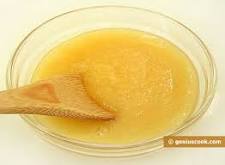
By Brian McCurdy, Associate Editor
Can the ancient remedy of honey make an impact in treating wounds that are resistant to traditional antibiotics? Two articles, published recently in Ostomy Wound Management and in the Journal of Applied Microbiology, suggest honey may show some promise in wound healing.
The Journal of Applied Microbiology study involved 18 strains of MRSA and seven strains of vancomycin-sensitive enterococci (VSE), which were isolated from infected wounds. Researchers established their sensitivity to two natural honeys of median levels of antibacterial activity and compared that with an artificial honey solution.
The MIC values against manuka honey (with non-peroxide activity of 18% phenol) and pasture honey (with hydrogen peroxide activity of 13.7% phenol) were under 10 percent (v/v), according to the study. Researchers found that the concentrations of artificial honey had to be at least three times higher in order to achieve equivalent inhibition in vitro.
The study’s in vitro tests demonstrated that two natural honeys were significantly more effective than an artificial honey solution in inhibiting MRSA and VSE. This finding runs counter to previous research that indicated that the sugar content of honey was solely responsible for its antibacterial effect.
The authors of the study, Rose A. Cooper, Peter C. Molan and Keith G. Harding, concluded the inhibition of bacteria by honey is not exclusively due to osmolarity. For the gram-positive cocci tested, antibiotic-sensitive and –resistant strains showed similar sensitivity to honey.
“The findings of this study, together with two previous studies, show honey offers promise as an effective wound antiseptic with broad spectrum antimicrobial activity,” the authors note in the Journal of Applied Microbiology study.
The Journal of Applied Microbiology study involved 18 strains of MRSA and seven strains of vancomycin-sensitive enterococci (VSE), which were isolated from infected wounds. Researchers established their sensitivity to two natural honeys of median levels of antibacterial activity and compared that with an artificial honey solution.
The MIC values against manuka honey (with non-peroxide activity of 18% phenol) and pasture honey (with hydrogen peroxide activity of 13.7% phenol) were under 10 percent (v/v), according to the study. Researchers found that the concentrations of artificial honey had to be at least three times higher in order to achieve equivalent inhibition in vitro.
The study’s in vitro tests demonstrated that two natural honeys were significantly more effective than an artificial honey solution in inhibiting MRSA and VSE. This finding runs counter to previous research that indicated that the sugar content of honey was solely responsible for its antibacterial effect.
The authors of the study, Rose A. Cooper, Peter C. Molan and Keith G. Harding, concluded the inhibition of bacteria by honey is not exclusively due to osmolarity. For the gram-positive cocci tested, antibiotic-sensitive and –resistant strains showed similar sensitivity to honey.
“The findings of this study, together with two previous studies, show honey offers promise as an effective wound antiseptic with broad spectrum antimicrobial activity,” the authors note in the Journal of Applied Microbiology study.
A Closer Look At Studies That Reveal Faster Healing
Dr. Molan, BSc(Hons), PhD, says the use of honey in wound healing may be coming back into vogue given the rise of antibiotic-resistant bacteria. In his recent Ostomy Wound Management (OWM) article, “Re-Introducing Honey In The Management Of Wounds and Ulcers—Theory And Practice,” Dr. Molan summarizes three prospective, randomized, controlled clinical trials.
In the trials, researchers found honey helped heal superficial burns faster than polyurethane film or silver sulfadiazine ointment. One of the studies comparing honey-impregnated gauze with polyurethane film found that the mean time to healing with the first group was 4.5 days less than the polyurethane film group and “significantly fewer honey-dressed wounds became infected.”
Studies also revealed a difference between honey-impregnated gauze and silver-sulfadiazine impregnated gauze. One study found that 87 percent of the honey-treated wounds healed in 15 days as opposed to just 10 percent of the silver sulfadiazine treated wounds.
According to the OWM article, a second trial revealed that 100 percent of honey-treated wounds healed within 21 days whereas 84 percent of wounds treated with the silver sulfadiazine healed within the same time period.
Dr. Molan, BSc(Hons), PhD, says the use of honey in wound healing may be coming back into vogue given the rise of antibiotic-resistant bacteria. In his recent Ostomy Wound Management (OWM) article, “Re-Introducing Honey In The Management Of Wounds and Ulcers—Theory And Practice,” Dr. Molan summarizes three prospective, randomized, controlled clinical trials.
In the trials, researchers found honey helped heal superficial burns faster than polyurethane film or silver sulfadiazine ointment. One of the studies comparing honey-impregnated gauze with polyurethane film found that the mean time to healing with the first group was 4.5 days less than the polyurethane film group and “significantly fewer honey-dressed wounds became infected.”
Studies also revealed a difference between honey-impregnated gauze and silver-sulfadiazine impregnated gauze. One study found that 87 percent of the honey-treated wounds healed in 15 days as opposed to just 10 percent of the silver sulfadiazine treated wounds.
According to the OWM article, a second trial revealed that 100 percent of honey-treated wounds healed within 21 days whereas 84 percent of wounds treated with the silver sulfadiazine healed within the same time period.
Assessing Other Potential Benefits of Honey
Honey also has a few benefits over antibiotics and other topical agents. Drs. Cooper, Molan and Harding note that unlike antibiotics, honey doesn’t require any lab evaluation of susceptibility prior to treatment. They also point out that honey does not adversely affect tissue as other topical antimicrobials may do.
Honey also has a few benefits over antibiotics and other topical agents. Drs. Cooper, Molan and Harding note that unlike antibiotics, honey doesn’t require any lab evaluation of susceptibility prior to treatment. They also point out that honey does not adversely affect tissue as other topical antimicrobials may do.
هیچ نظری موجود نیست:
ارسال یک نظر